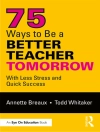Learn to design exemplary Parallel Curriculum Units from the experts—classroom teachers!
What is the best way to incorporate the four parallels into your Parallel Curriculum Unit? How do teachers using the Parallel Curriculum Model (PCM) craft units based on the PCM and why do they utilize certain elements and downplay others? What does a complete Parallel Curriculum Unit look like? This compilation of Parallel Curriculum Units provides a close-up look into the development of PCM units and how those units work in actual classroom settings.
The Parallel Curriculum in the Classroom, Book 2 reflects a variety of Parallel Curriculum units spanning primary, elementary, middle, and high school levels of instruction and encompassing the disciplines of social studies, science, art, math, and language arts. Across each unit, the authors present a framework of three essential components in an effective Parallel Curriculum Unit:
- The big picture of grade level, subject, goals, and standards
- The unpacking, or step-by-step explanation of the unit
- The reasoning behind the unit design
Whether using each parallel independently or combining all four parallels into curriculum design, teachers will find the units included here are exemplary models for creating their own parallel curriculum units. Use them as professional development tools to help plan thoughtful curriculum based upon the Parallel Curriculum Model!
विषयसूची
Introducing the Parallel Curriculum Model in the Classroom by Carol Ann Tomlinson and Sandra Kaplan
About the Book
Using the Model and Units for Professional Development
Acknowledgments
I. Your Story, My Story, History: A Unit for Kindergarten Students by Deborah Burns
Background for Unit
Content Framework
Making Sure the Parallels Remain Central in Teaching and Learning
Unit Sequence, Description, and Teacher Reflections
II. Wind – The Unequal Heating of the Earth’s Surface: A Core Unit on Weather for Elementary Students by Jeanne Purcell
Background for Unit
Content Framework
Making Sure the Core Parallel Remains Central in Teaching and Learning
Unit Sequence, Description, and Teacher Reflections
III. Adaptation: A Social Studies Unit on Cultures for Elementary Students by Sandra N. Kaplan
Background for Unit
Content Framework
Making Sure the Parallels Remain Central in Teaching and Learning
Unit Sequence, Description, and Teacher Reflections
IV. Open Your Eyes: A Unit on Visual Art History and Artistry for Middle School Students by Meg Eason Hines
Background for Unit
Content Framework
Making Sure the Parallel of Practice Remains Central in Teaching and Learning
Unit Sequence, Description and Teacher Reflections
V. Historical Sleuthing: A Parallel of Practice Unit for Middle School Students by Carol Horn and Janice Strauss
Background for Unit
Content Framework
Making Sure the Parallel of Practice Remains Central in Teaching and Learning
Unit Sequence, Description, and Teacher Reflections
Unit Resources
Unit References
VI. The Power of Exponents: A Middle or High School Math Unit Incorporating All Four Parallels by Kristen Wogman Baron
Background for Unit
Content Framework
Making Sure the Parallels Remain Central in Teaching and Learning
Unit Sequence, Description, and Teacher Reflections
Core Curriculum Lessons
Curriculum of Connections
Curriculum of Practice Lessons
Curriculum of Identity Lessons
VII. With Liberty and Justice for All: A U.S. Government Unit Based on the Core and Identity Parallels for Middle or High School Students by Cindy Strickland
Background of Unit
Content Framework
Making Sure the Core and Identity Parallels Remain Central in Teaching and Learning
Unit Sequence, Description, and Teacher Reflections
Unit Resources
VIII. Using Biography and Autobiography to Understand Challenge, Choice, and Chance: A Unit for High School Students Incorporating All Four Parallels by Jann H. Leppien and Curt Bobbitt
Background for Unit
Content Framework
Making Sure the Parallels Remain Central in Teaching and Learning
Unit Sequence, Description, and Teacher Reflections
Core Curriculum Lessons
Curriculum of Practice Lessons
Curriculum of Connections Lessons
Curriculum of Identity Lessons
Index
लेखक के बारे में
Cindy A. Strickland has been a teacher for twenty-five years and has worked with students of all ages, from kindergarten to master’s degree. A member of the ASCD Differentiation Faculty Cadre, Cindy works closely with Carol Ann Tomlinson and has coauthored several books and articles with her. In the past eight years, Cindy’s consulting work has taken her to forty-six states, five provinces, and three continents where she has provided workshops on topics relating to differentiation, the Parallel Curriculum Model (PCM), and gifted education. Cindy’s publications include Staff Development Guide for the Parallel Curriculum; The Parallel Curriculum Model, 2nd edition; The Parallel Curriculum Model in the Classroom: Applications Across the Content Areas; and In Search of the Dream: Designing Schools and Classrooms That Work for High Potential Students from Diverse Cultural Backgrounds.Publications in differentiation include Professional Development for Differentiated Instruction: An ASCD Toolkit, Exploring Differentiated Instruction, Tools for High-Quality Differentiated Instruction: An ASCD Toolkit, the ASCD online course Success with Differentiation, the book Differentiation in Practice: A Resource Guide for Differentiating Curriculum, Grades 9–12, and a unit in the book Differentiation in Practice: A Resource Guide for Differentiating Curriculum, Grades 5–9.












